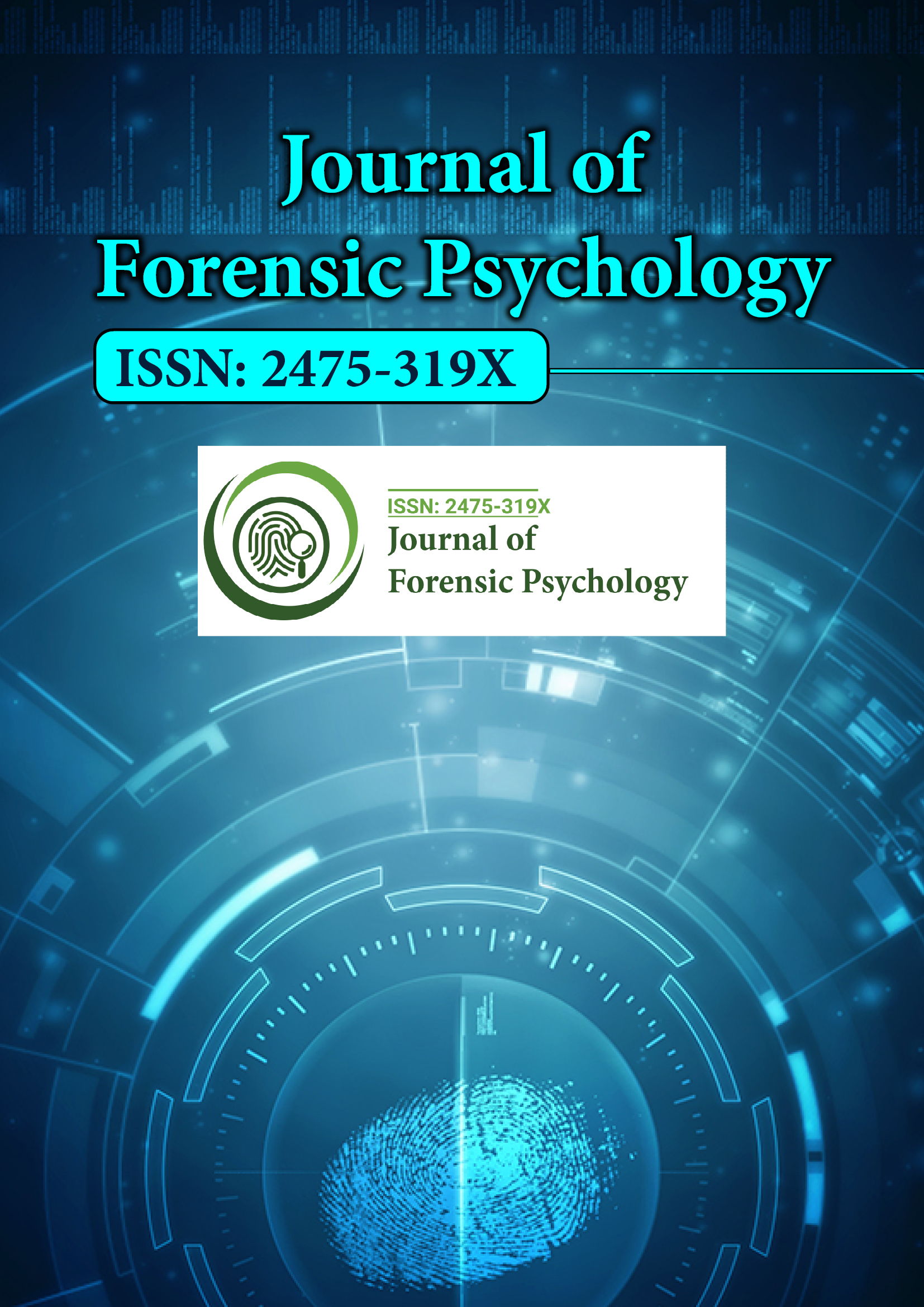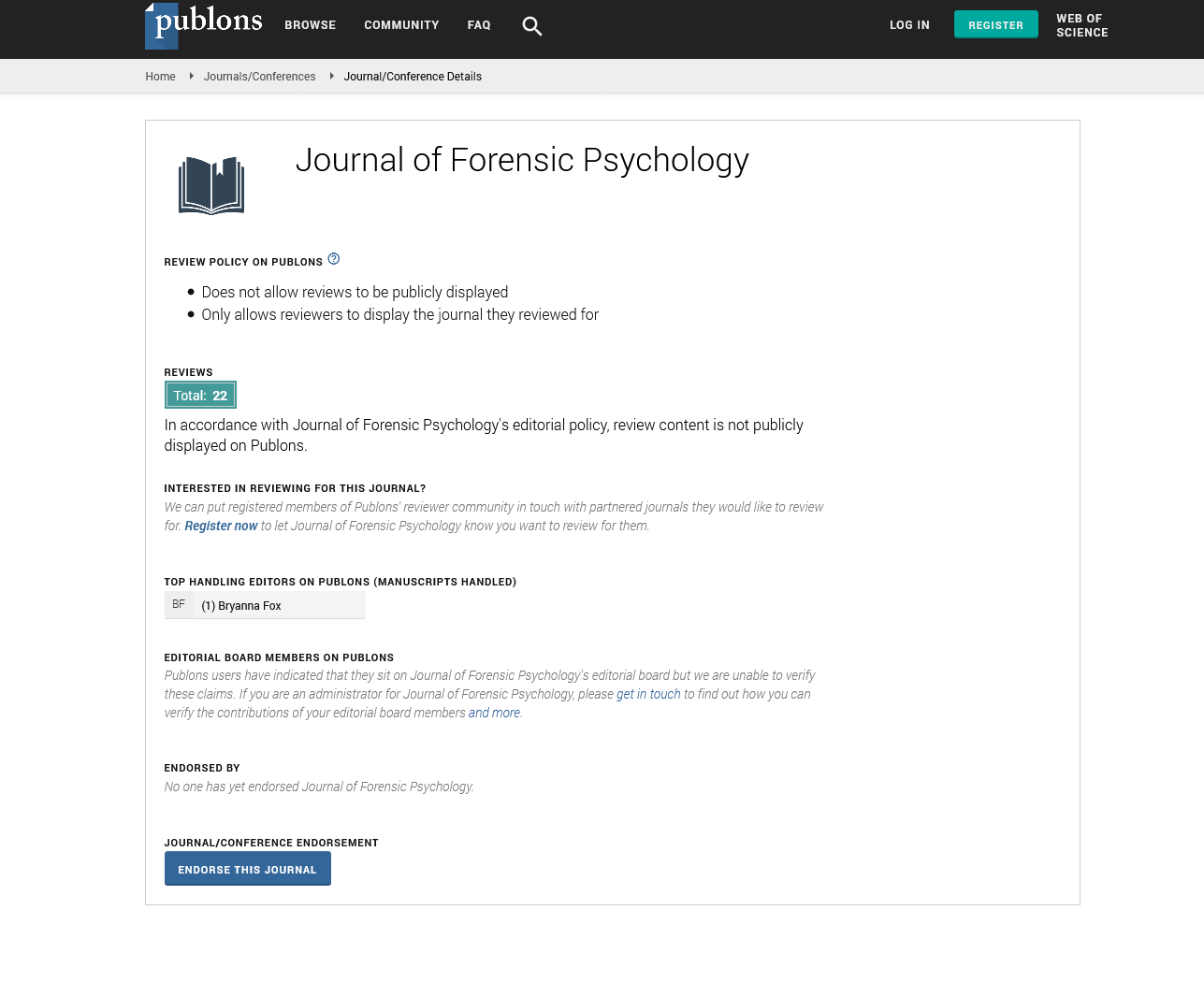Indexed In
- RefSeek
- Hamdard University
- EBSCO A-Z
- Publons
- Geneva Foundation for Medical Education and Research
- Euro Pub
- Google Scholar
Useful Links
Share This Page
Journal Flyer

Open Access Journals
- Agri and Aquaculture
- Biochemistry
- Bioinformatics & Systems Biology
- Business & Management
- Chemistry
- Clinical Sciences
- Engineering
- Food & Nutrition
- General Science
- Genetics & Molecular Biology
- Immunology & Microbiology
- Medical Sciences
- Neuroscience & Psychology
- Nursing & Health Care
- Pharmaceutical Sciences
Commentary - (2021) Volume 6, Issue 8
A Brief Description about Post Traumatic Stress Disorder
Martin Shalev*Received: 09-Aug-2021 Published: 30-Aug-2021, DOI: 10.35248/2475-319X.21.6.184
Description
Post-Traumatic Stress Disorder (PTSD) is an intellectual and psychological disorder that can progress due to the vulnerability to a traumatic incident, such as sexual assault, combat, traffic accidents, child abuse, domestic violence, or other threats to a person's life. Symptoms may include distracting thoughts, emotions, or nightmares related to the incidents, mental or physical agony to trauma-associated indications, trials to prevent trauma-related symptoms, modifications in the way a person expects and senses, and enhancement in the fight-or-flight response. These symptoms last for more than a month after the traumatic episode. Youngsters are less liable to show distress, but rather may express their recollection of past performance. A person with PTSD is at a higher risk of suicide and voluntary self-injury.
Prevention may be accomplished when counseling is intended at those with initial symptoms but is not effective when produced to all trauma-manifested persons whether or not symptoms are present. The principal treatments for an individual with PTSD are consulting physicians (psychotherapy) and medication. Antidepressants of the SSRI or SNRI type are the first-line medications used for PTSD and are somewhat considerable around half of the people. The advantages of medication are less than those seen with counseling. It is unknown whether using medications and counseling together has great benefit than either method individually. Medications, other than some SSRIs or SNRIs, do not have adequate significance to aid their use and, in the case of benzodiazepines, may deteriorate consequences.
Symptoms of PTSD generally start in the first three months after the causing traumatic incident, but may not starts until years later. In the typical instance, the person with PTSD relentlessly prevents either trauma-related thoughts and emotions or consultation of the traumatic incident, and may even have a loss of memory of the incident. However, the event is commonly relived by the individual through invasive, repetitive memories, dissociative events of recalling the trauma, and nightmares (50 to 70%). While it is, in general, to have symptoms after any traumatic incident, these must continue to an adequate degree for an extended period more than one month after the trauma to be classified as PTSD. Some following a traumatic incident come across post-traumatic growth.
Individuals, who examine at high risk, include combat military personnel, victims of natural disasters, concentration camp survivors, and victims of violent crime. Persons working in occupations that expose them to violence (such as soldiers) or calamities (such as emergency service workers) are also in danger. Other professions which are at higher risk include police officers, firefighters, ambulance personnel, health care professionals, train drivers, divers, journalists, and sailors, in addition to people who work at banks, post offices, or in stores.
Medical conditions related to an increased risk of PTSD include cancer, heart attack, and stroke. Intensive-Care Unit (ICU) hospitalization is also a determinant condition for PTSD women come up against PTSD from their experiences associated with breast cancer and mastectomy. Loved ones of those who experience life-threatening illnesses are also at risk for progressing PTSD, such as parents of children with chronic illnesses.
Citation: Shalev M (2021) A Brief Description about Post Traumatic Stress Disorder. J Foren Psy.6:184
Copyright: © 2021 Shalev M. This is an open access article distributed under the terms of the Creative Commons Attribution License, which permits unrestricted use, distribution, and reproduction in any medium, provided the original author and source are credited.

